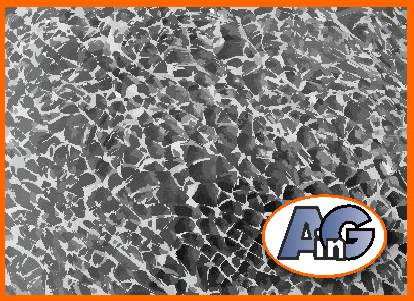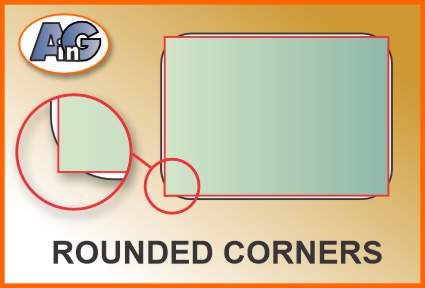Tempered glass is 4 to 5 times stronger than regular annealed glass and is used for shower and patio doors and anywhere in the home where safety is necessary. However, it cannot be cut, notched, or drilled once tempered.
Many misleading websites claim that tempered glass can be cut – but this is not true – if you try to cut or drill tempered glass it will explode into pieces. Can tempered glass be cut? NO!
The ludicrous idea suggested by such prestigious websites as WikiHow is that you should:
“Gain access to a kiln that you can use to anneal the glass. The intense heat of a kiln is required to soften the tempered glass’s coating and begin the annealing process.”
Such websites are, to say the least, highly misleading because very few homeowners can “gain access to a large kiln”!
Always trust experts when evaluating internet information – jump to this section for more examples of erroneous and misleading online info
What is tempered glass?
Annealed glass is cut to size and then processed in an industrial oven to create tempered (safety) glass. It is 4 to 5 times stronger (more impact resistant) than regular float glass.

Most important: it is safe – because when it does break, it forms harmless popcorn fragments.

Learn more about tempered glass in these useful posts: “should glass shelves be tempered?” and “should glass tabletops be tempered?”
As an Amazon Associate, I earn from qualifying purchases
Uses of tempered glass
Because of its strength and safety characteristics, tempered glass is used in every place where breakage will constitute a hazard to personal safety. The most common applications are patio doors, patio tables, shower enclosures, and windows in close proximity to public access. For more details on the building codes relating to tempered glass follow this link.
What can go wrong?
The fact that tempered glass cannot be cut highlights the importance of the age-old maxim of measuring twice and cutting once. If you order your tempered glass too large it cannot be cut down to size (despite crazy statements to the contrary from uneducated bloggers). Jump to this section for tips on sizing tempered glass correctly.
What to do if your glass is too big
To repeat the very important message: tempered glass cannot be cut down to size if you ordered your glass too large. However, some edge grinding can be done. with great care, to round the corners, make small notches and shave 1/16″ from a side. Read on to learn what is possible.

Grinding down a large piece of tempered glass is very labor-intensive and therefore expensive. This is the main reason why glass companies are unwilling to grind 1/8″ from the side of a tempered glass panel. Even if it can be done without breaking the glass, it weakens the panel and, above all, is not cost-effective.
Modifying tempered glass – notches, corners, and sides
Understanding that tempered glass cannot be cut, it is possible (though not recommended) to grind or notch a panel up 1/8″ in from the edge without the glass exploding. This size and shape modification is normally necessary to correct problems like:
- The glass is too big
- The frame is out of square
- The frame has rounded corners
- The frame has protruding clips or tabs
The glass is too big
A very common mistake made by amateurs is to order glass just a little too big. There is absolutely no reason to jam a piece of glass tightly into the frame.
Our tip when deciding on the size of your window or other framed glass is to measure the “LITE” opening (the opening that the light or the picture shows through) and measure the “TITE” opening (the size of the frame). The trick then is to make the glass bigger than the “LITE” opening and smaller than the “TITE” opening – as shown in the image below:

This principle is so important that it is worth repeating. There is no reason to jam the glass tightly into the frame. If the frame swells with high humidity or is warped slightly out of square – then your glass will not fit.
The secret to cutting glass the right size
Getting the size of a glass panel just right is a bit like gambling at Las Vegas. If you are a risk-taker you can use the TITE frame opening but if the glass (tolerance +/- 1/16″) is a little too big, the frame is warped or out of square – you will lose your bet and the glass will not fit.
So follow the larger than the LITE opening and smaller than the TITE opening rule and always allow “wiggle room”. In practice, this means taking the tight (TITE) opening (width and length) and subtracting 1/4″.
The frame is out of square
Even if your measurements (the width and length) of the opening are correct, the glass will likely not fit if the frame is out of square. Wooden window frames (sidelights and entry doors) in older homes are commonly out of square and the same problem is common in antique wooden furniture.

To make sure your frame is square, check that the diagonals are the same lengths.

Profession tip for ordering glass! Ordering glass out of square (ie parallelograms or trapezoids will need a paper template and incur an upcharge. To save time and money order the closest rectangle that will fit the opening. Follow this link for more tips on buying glass.
Grinding glass to fit an out-of-square frame
Grinding the edge of a tempered glass panel is not recommended and it is also labor-intensive. However, it is possible to remove 1/8″ or so from the side of a panel in order to make it fit.
The frame has rounded corners
Many metal or wooden frames have slightly rounded corners – meaning that glass, although cut to the correct width and length, will not fit. Rounded corners are typical of cabinet doors that have their wood removed by routering.

It is not recommended to cut the corners of tempered glass panels to make them fit, but our experience has been that rounding the corners with coarse sandpaper or diamond pads can be carried out without busting the tempered glass.
Diamond sanding pads in 4 grit sizes: 60# 100# 200# 400# are ideal for grinding the corners of tempered glass panels.
To avoid shattering the tempered glass, do not grind away more than 1/4″ of glass.
The frame has protruding tabs or clips
Occasionally a glass tabletop will not fit into its metal frame because of protruding tabs or clips. If you cannot grind off the metal clips, it is possible to notch the glass up to a depth of about 1/8″ to 3/16″ without breaking the tempered glass.
To notch glass, use diamond burrs like these in your Dremel or hand drill. This set includes 2 each of 6 different diameter bits – 4mm 5mm 6mm 8mm 10mm & 12mm
Misleading information on misleading websites
The volume of misleading information on the internet is astonishing. Experts like the professionals at Artistry-in-Glass are looking forward to the day when Google’s algorithm can identify erroneous statements and distinguish fact from fiction.
Until then, we quote just a few examples below:
Erroneous information
Example of confusing information from Fab Glass & Mirror:
The only possible way to cut & customize tempered glass is with the use of special laser cutters, and this cannot be done at home. So, homeowners must seek professional help if they really need to cut & customize the tempered glass without making it lose its strength & durability.
Note that tempered glass cannot be cut – even with a special laser cutter!
Misleading information
Anneal the glass by heating it at a high temperature of 1000 °F or 538 °C. This intense heat can be provided in the kiln. The annealing process can also be done by carefully heating the glass sheet on a heater. The heated glass is then cooled down slowly to restore the annealed glass.
Fact check! It is theoretically possible to anneal a sheet of tempered glass but this can only be done in large, industrial-scale kilns that no homeowner has access to. Even if you could persuade a large glass factory to anneal your glass it would not be economical – better to buy new glass!
Once you are done with cutting the glass sheet, it’s time to re-temper it. The process involves heating the glass sheet to a high temperature in a tempering oven and quickly cooling it by blasting cool air on it.
Fact Check! Tempering is also done in factories using million-dollar tempering furnaces, It is ludicrous to advise homeowners that they can temper their own glass!
More misleading information
Once you are finally finished with the cutting now you need to re-temper your glass. Moreover, after it, you will have the final piece of tempered glass of your requirement.
If you follow the above-mentioned procedure in the right order and use, the proper tools for the job. You can cut your tempered glass with ease.
This misleading site also promotes the crazy idea that you can un-temper (ie anneal) glass in your home, cut it (with ease) then re-temper it!
Summary & conclusions
It is not true that tempered glass can be cut down to size. Tempered glass cannot be cut with a glass cutter, with a wet saw, a tile saw, a diamond blade, a water jet cutter, or even with a laser cutter. It cannot be cut period!
Bearing this in mind, always take extra care to measure your tempered glass correctly.
Glass tabletops & shelves – info from Artistry in Glass
- Benefits of glass shelving – info from experts!
- How much do glass tabletops cost?
- Do glass shelves need to be tempered?
- What is the best thickness for glass shelves?
- Best edge type for glass shelves, polished or beveled?
- How much weight can a wall shelf carry?
- What color glass should my shelves be?
- Glass tabletops – 10 amazing benefits explained
- How to order a glass tabletop
- Best thickness for glass tabletops – expert advice
- Should glass tabletops be tempered?
- Should glass tabletops be beveled?
- How to paint a glass tabletop
- All about tempering glass tabletops!
- How to tell if your glass is tempered
- Can tempered glass be cut?
- How to protect your wood table with glass
- How to fix a scratched glass tabletop
- How to fix a chipped glass tabletop
- How to replace broken patio table glass
- How to measure for a glass tabletop
- Video – how to measure your tabletop
- Plexiglass vs glass – pros and cons
- Beveled glass table base – a case study
- Choosing between tempered & laminated glass
- Glossary of terms used in the glass business





